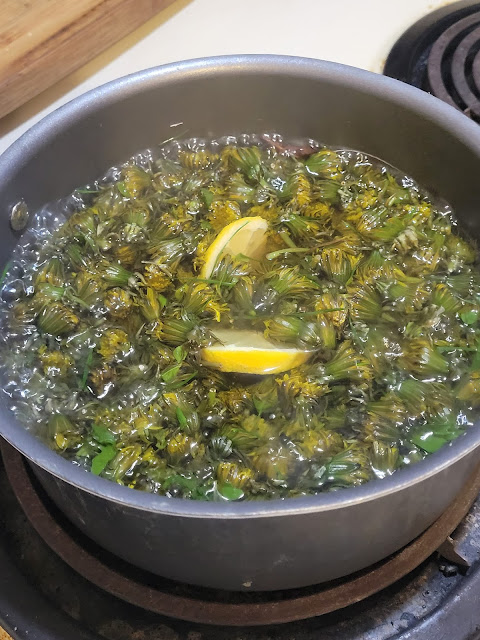Fermented Fire: Exploring Homemade Mango Habanero and Habanero Carrot Hot Sauces
Venturing into the world of homemade hot sauces can be an exciting and flavorful journey.
In this article, we'll explore the creations of a hot sauce enthusiast who is embarking on their second and third batches of fiery concoctions. Discover the tantalizing flavors of a mango habanero hot sauce infused with ginger, onion, and garlic, as well as a habanero carrot hot sauce featuring a medley of vegetables. Join us as we delve into the fermenting process and learn how these vibrant hot sauces can add a punch of heat to your culinary creations.
Recipe: Mango Habanero Hot Sauce
Ingredients:
- - 5 ripe mangoes, peeled and diced
- - 6 habanero peppers, stems removed
- - 1 small onion, roughly chopped
- - 4 cloves of garlic, minced
- - 1-inch piece of fresh ginger, peeled and grated
- - 2 tablespoons sea salt
Instructions:
1. Prepare the fermentation vessel:
- - Clean and sanitize a 1-gallon glass jar or fermentation vessel. Ensure it is thoroughly rinsed and free from any residue.
2. Combine the ingredients:
- - In a large bowl, combine the diced mangoes, habanero peppers, onion, garlic, ginger, and sea salt. Toss the ingredients together until well mixed.
3. Transfer to the fermentation vessel:
- - Carefully transfer the mixture into the sanitized fermentation vessel. Use a clean spoon or masher to press down on the ingredients, ensuring they are packed tightly and any air pockets are eliminated.
4. Begin the fermentation process:
- - Cover the mouth of the fermentation vessel with a clean cloth or a fermentation lid, allowing gases to escape while preventing contaminants from entering. Place the vessel in a cool, dark location, ideally between 60°F to 75°F (15°C to 24°C).
5. Monitor and burp the hot sauce:
- - Check on the hot sauce daily or every other day. As fermentation occurs, carbon dioxide will be released, causing pressure to build up in the vessel. Gently "burp" the hot sauce by lifting the cloth or lid to release any excess gas.
6. Ferment to taste:
- - Allow the hot sauce to ferment for at least one week, or longer if desired. The flavors will continue to develop over time. Taste the hot sauce occasionally to determine your desired level of fermentation.
7. Blend and strain:
- - Once the desired fermentation is achieved, carefully transfer the fermented mixture to a blender. Blend until smooth and well combined. If desired, strain the hot sauce through a fine-mesh sieve to remove any remaining solids.
8. Canning the hot sauce:
- - Once blended, the hot sauce can be canned for longer shelf life. Follow proper canning procedures, including sterilizing jars, filling them with the hot sauce, and processing them in a water bath canner according to recommended guidelines.
Recipe: Habanero Carrot Hot Sauce
Ingredients:
- - 8 habanero peppers, stems removed
- - 2 cups carrots, peeled and roughly chopped
- - 1 small onion, roughly chopped
- - 1 bell pepper, seeds and stems removed, roughly chopped
- - 4 cloves of garlic, minced
- - 2 tablespoons sea salt
Instructions:
1. Follow steps 1-7 of the Mango Habanero Hot Sauce recipe, substituting the ingredients accordingly.
2. Blend and strain:
- - Once the fermentation process is complete, transfer the fermented mixture to a blender. Blend until smooth and well combined. Strain the hot sauce through a fine- mesh sieve to remove any solids.
3. Canning the hot sauce:
- Just like the Mango Habanero Hot Sauce, the Habanero Carrot Hot Sauce can be canned for longer shelf life. Follow proper canning procedures, including sterilizing jars, filling them with the hot sauce, and processing them in a water bath canner according to recommended guidelines.
Experimenting with homemade hot sauces opens up a world of bold flavors and fiery heat. Whether you're infusing mangoes with habaneros and aromatic spices or combining habaneros with carrots, onions, and bell peppers, the possibilities for creating unique hot sauces are endless. Through the process of fermentation, you can unlock the full potential of these ingredients, allowing their flavors to meld and intensify over time. So, embrace the heat, embark on your own hot sauce fermentation journey, and elevate your culinary creations with these vibrant and fiery condiments.




















Comments